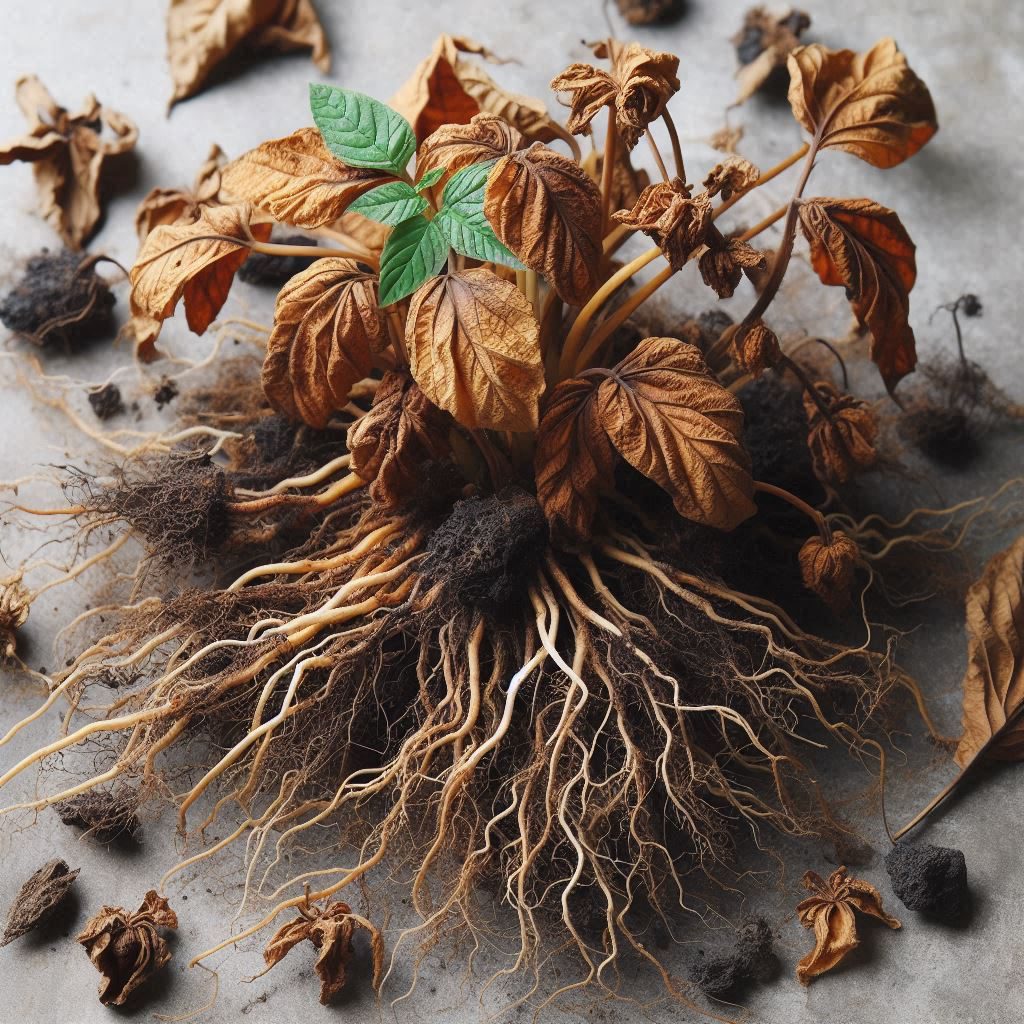Root rot is a condition affecting plants where their roots begin to decay due to prolonged exposure to overly wet, soggy soil conditions. This condition is caused by fungi and other pathogens thriving in waterlogged environments.
Symptoms of Root Rot
- Wilting: Despite adequate watering, plants may wilt because the damaged roots can’t take up water.
- Yellowing Leaves: Leaves may turn yellow or brown, starting from the bottom of the plant.
- Stunted Growth: Plants may grow slowly or stop growing altogether.
- Soft, Mushy Roots: When examined, roots may appear brown, black, and mushy instead of white and firm.
- Foul Smell: Decaying roots can produce an unpleasant odor.
Root rot is a condition affecting plants where their roots begin to decay due to prolonged exposure to overly wet, soggy soil conditions. This condition is caused by fungi and other pathogens thriving in waterlogged environments.
Causes of Root Rot
- Overwatering: Excessive watering can lead to consistently wet soil, creating an environment conducive to fungal growth.
- Poor Drainage: Soil that does not drain well, such as heavy clay soil, can retain too much water.
- Standing Water: Areas in the garden or pots that do not allow water to drain away can lead to root rot.
- Infected Soil: Soil contaminated with fungal spores can infect healthy plants.
Symptoms of Root Rot
- Wilting: Despite adequate watering, plants may wilt because the damaged roots can’t take up water.
- Yellowing Leaves: Leaves may turn yellow or brown, starting from the bottom of the plant.
- Stunted Growth: Plants may grow slowly or stop growing altogether.
- Soft, Mushy Roots: When examined, roots may appear brown, black, and mushy instead of white and firm.
- Foul Smell: Decaying roots can produce an unpleasant odour.
Prevention and Treatment of Root Rot
- Proper Watering: Water plants only when the top inch of soil is dry. Avoid overwatering and ensure pots have drainage holes.
- Improve Soil Drainage: Amend heavy soils with organic matter like compost to improve drainage. Use raised beds or mounds for better drainage.
- Use Well-Draining Pots: Ensure that potted plants are in containers with good drainage.
- Remove Affected Plants: Remove and dispose of plants with severe root rot to prevent the spread of the fungus.
- Fungicide Treatment: In some cases, fungicides can be used to treat the soil and protect healthy plants.

